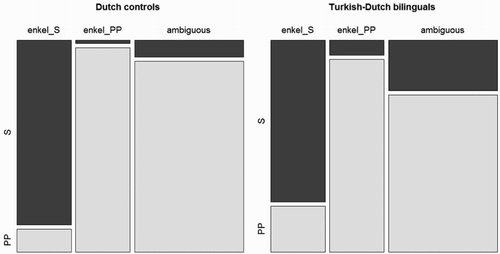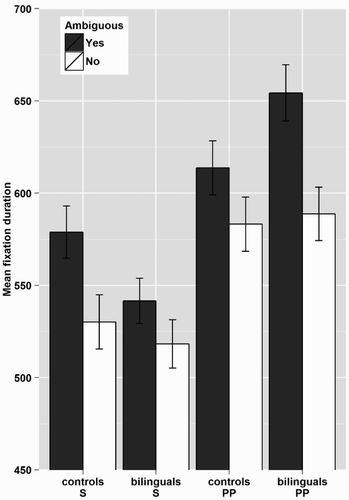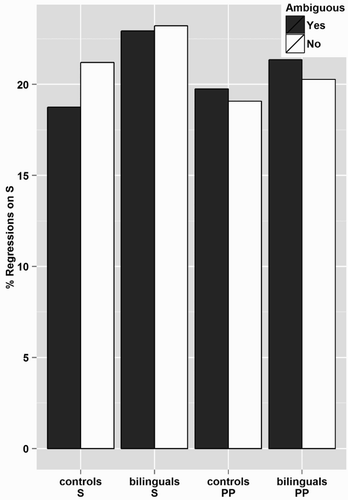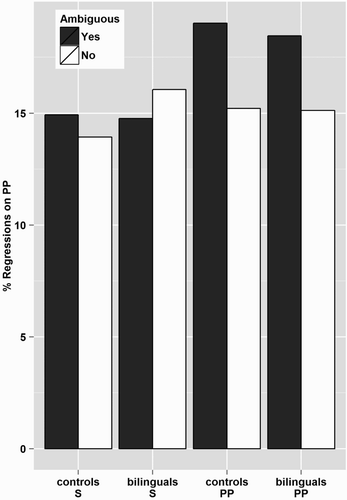Figures & data
Table 1. Means self-reported language proficiency ratings (and standard deviations) for all participants.
Table 2. Turkish and Dutch BNT scores for all participants.
Table 3. Turkish and Dutch average fixation durations per word and standard deviations for all participants, in ms.
Figure 1. Mosaic plots of proportions of the choice for subject (S) and prepositional phrase (PP) in three conditions (non-ambiguous S, non-ambiguous PP, and ambiguous), by the Dutch controls and the Turkish-Dutch bilinguals.

Figure 2. Total fixation durations on the disambiguating phrase in the four conditions (ambiguous S, non-ambiguous S, ambiguous PP, and non-ambiguous PP) for the Dutch controls and the Turkish-Dutch bilinguals, in ms.

Table 4. Effects on log-transformed total fixation durations on the disambiguating phrase.
Figure 3. Proportions of number of regressions on the subject relative to the total number of fixations on the subject, in the four conditions (ambiguous S, non-ambiguous S, ambiguous PP, and non-ambiguous PP) for the Dutch controls and the Turkish-Dutch bilinguals.

Table 5. Effects of number of regressions on the subject.
Figure 4. Proportions of number of regressions on the prepositional phrase relative to the total number of fixations on the PP, in the four conditions (ambiguous S, non-ambiguous S, ambiguous PP, and non-ambiguous PP) for the Dutch controls and the Turkish-Dutch bilinguals.

